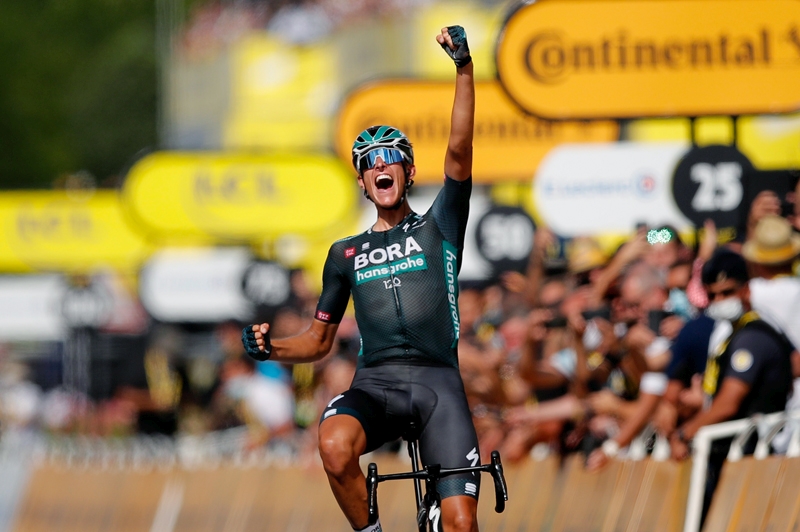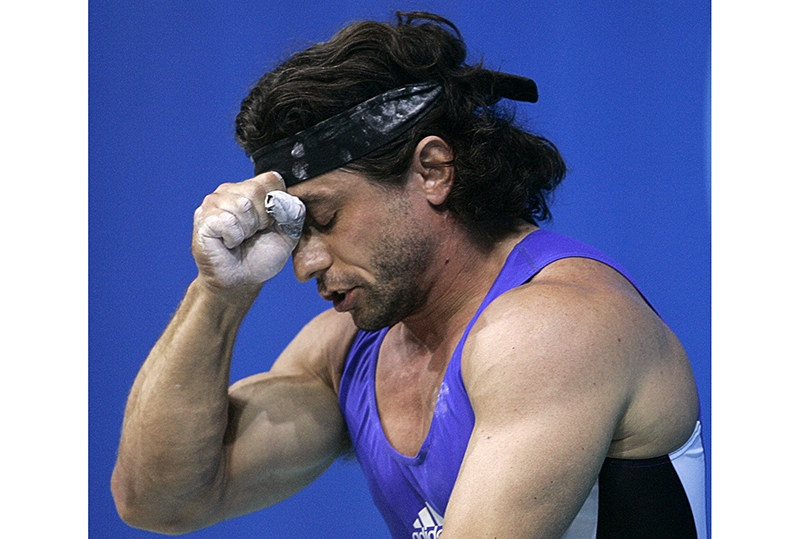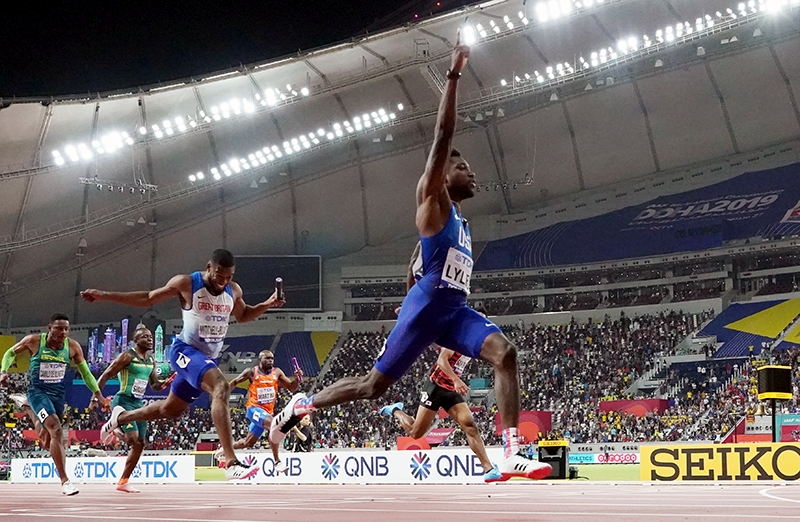Public uproar followed exit from the 2006 World Cup on penalties after defeat by Portugal and questions such as: ‘Why can’t the England players take penalties in major competitions?’ and ‘Do English penalty takers have the nerve for major competition?’ followed. Successful penalty taking for professional players is about maintaining consistency. Penalties are missed when performance dips, and dips to catastrophic levels.
Variable performance
Addressing the issue of why performance varies is a common reason for athletes seeking support from a sport psychologist. If we begin asking: ‘To what extent does your performance in training vary?’ athletes tend to say ‘Not by much’ and if performance improves or deteriorates, they can often provide a good reason why.For example, if an athlete can bench press five sets of 10 repetitions at 70kg, and performs this session three times per week, its possible he/she can repeat this performance. He or she might perform worse if they have had trained hard already that day, or is stressed from the pressures of work, but in general, athletes confidently estimate that they produce non-maximal performance repeatedly, and this relates strongly with actual performance. The key point is that athletes are highly confident about being capable of delivering a sub-maximal performance. However, this level of consistency changes when athletes want to produce peak performance at key times.
Of the variables susceptible to change, a plethora of studies provide convincing evidence of the transient nature of emotions (1). Emotions can come on rapidly, invading our consciousness and disturbing the normal flow of thoughts and actions during competition (2). Emotion can usurp performance routines of even the most able athletes.
The effects of emotion on performance are most apparent when people are asked to perform a routine skill under pressure, such as walking a rope ladder 20 metres above ground(3). It’s the same skill as walking on the ground, but once the person becomes nervous and starts thinking about performance, they inhibit performance. Extending this logic to sport, it is not surprising that intense emotions represent the most plausible explanation on why soccer players miss penalties in competition, but rarely miss in practice (to the extent that many argue that practicing penalties is not a productive strategy).
A great deal of research has demonstrated links between emotions and performance (2). Research indicates that athletes develop beliefs on which emotions help performance and which emotions hinder performance. Research has indicated that emotional intelligence, defined as the ability as to identify, regulate and utilise emotional states to bring about peak performance is an important variable for sport psychologists to work with(4). Furthermore, it has been proposed that consistent performance is brought about by frequent usage of psychological skills such as imagery, self-talk, goal-setting and relaxation training to manage the stresses and strains of competition(5).
Practicing performance under pressure
Athletes spend relatively little time performing under pressure. When the critical moment arrives therefore, they have had relatively little exposure to the pressures involved so perhaps it’s not so surprising that performance can vary. In short, skills learned in non-pressure situations will not necessarily transfer to pressure situations.One useful strategy for learning to perform under pressure is to simulate the demands of competition using imagery. A recent development in imagery research is the PETTLEP (Physical, Environment, Task, Timing, Learning, Emotion and Perspective) model – see table 1(6). PETTLEP aims to closely replicate the sporting situation through imagery, including physical and emotional sensations associated with performance. Research demonstrates that imagery is associated with enhanced performance in pressure situations (7).
| PETTLEP model | Applied to sport |
| Physical – the athlete’s physical responses in the sporting situation | Examples include holding the correct stance, holding any implements that would usually be held, and wearing the correct clothing. |
| Environment – replicate the actual performing environment | Imagining the performance should be as similar as possible to the actual performing environment. If a similar environment is not possible, photographs of the venue or audio tapes of crowd noise can be used. |
| Task – replicate the skill or set of moves performed in competition | Examples include; taking a penalty, running up a hill, a particularly phase of play. |
| Timing – the pace at which the imagery is completed | Use a stopwatch to record the actual time it takes to complete the task, and then perform the imagery at the same speed. |
| Learning – the adaptation of the imagery content in relation to the rate of learning. | For example, a soccer player who learns that effective penalty taking involves placing the ball down, taking seven steps backwards, and then focusing on kicking through the center of the ball so that it is directed to the chosen spot in the goal. |
| Emotion – simulate those emotions experienced in competition | For example, if the athlete felt nervous at the start of competition, then up-regulate emotions to feel nervous before starting imaging a task from the competition. |
| Perspective – imagery can be internal (first person) or external (third person). Internal perspective refers to the view that an athlete would have when he was actually performing, whereas external perspective would be like watching yourself performing on a video tape. Internal imagery is preferable as it more closely approximates the athlete’s view when performing. | Eg, watch performance as though you are the camera. |
Athletes should learn to see themselves performing successfully in pressure situations, but should not underestimate the demands of the task. It’s important to perform well and condition positive emotions, but it’s also important not to create a false scenario that under-represents how difficult the task will be. The greater the clarity of the imagery and the extent to which this accurately replicates the demands of peak performance, the greater its potential benefits will be. Once these images have been developed, the athlete should incorporate imagery into his or her training program and not just save it for use in competition The more often the athlete performs imagery, the greater will be the simulated exposure to the stresses of competition (7).
Manage your mind habits
Emotional conditioning or reprogramming your mind habits involves challenging the habits associated with negative thinking. The performance sapping effects of unpleasant emotions are often built on a habit negative thinking (8). People have conditioned themselves to be susceptible to experiencing such emotions through negative thinking habits, and as such, these habits need breaking. The key is to reprogramme your mind to replace these negative habits with positive thoughts and images. Eventually these new positive thoughts will become habitual and performance will become more consistent.‘If-then’ plans have been found to be an effective method of changing thought processes (see table 2)(9). If-then plans work by putting the barrier to poor performance alongside the solution. By putting barriers and solutions side by side, the process of implementing the solution can become automated. During the learning stages, people repeat the if-then plan daily until it becomes ingrained. If-then plans can re-structure negative thoughts and turn them into positive thoughts by having pre-prepared structured statements.
With practice, you can become more aware of your emotions and able to use psychological strategies to manage performance. You also need to know what each emotion means and the appropriate response to deal with it. Practising sport skills using competition imagery and if-then strategies combined with PETTLEP can help you deal with these emotions. With practice, you can learn to manage your negative emotions until it becomes a habit!
References
1. Psych of Sport & Exerc, 8(1): p. 47-72 2007
2. Mood and human performance: Conceptual, measurement, and applied issues, Hauppauge, NY: Nova Science 2007
3. Cyber Psych & Behavior, 4(3): p. 335-339 2001
4. Emotional intelligence in sport: conceptual, methodological, and applied issues. In A.M. Lane, Editor. 2007, Nova Science: Hauppauge, NY.
p. 131-154
5. Social Behav and Persony: An International Journal, 37: p. 195-202 2009
6. J Applied Sport Psych, 13(1): p. 60-83 2001
7. Sport and Exercise Psychology: Topics in Applied Psychology, A.M. Lane, Editor. 2008, Hodder-Stoughton, UK. p. 139-150
8. Person and Social Psych Review, 11(2):
p. 167-203 2007
9. J Person and Social Psych. 96(1):
p. 11-31. 2009










